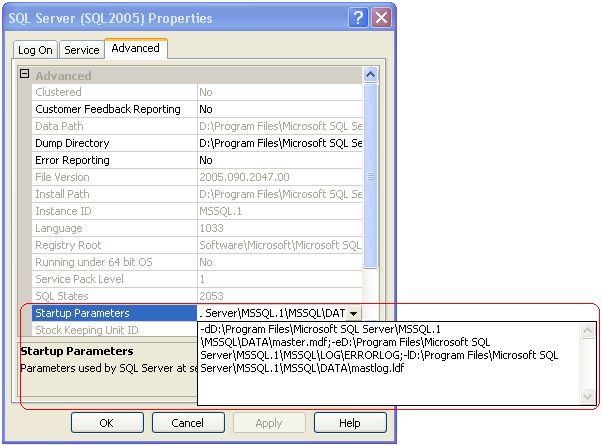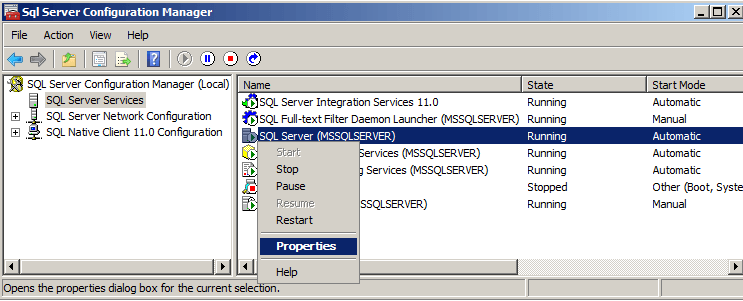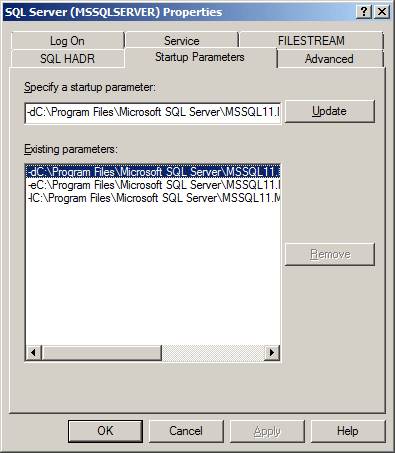By: Ashish Kumar Mehta | Comments | Related: 1 | 2 | 3 | 4 | > SQL Server Configurations
Problem
While looking through new features and improvements in SQL Server 2012, an improvement I came across was how to configure SQL Server startup options. This is a very useful change which Microsoft has made, thereby making it easier for database administrators to change startup options. In this tip we will take a look at how easily you can change the SQL Server startup options in SQL Server 2012.
Solution
In previous versions of SQL Server, whenever a DBA had to change the SQL Server startup options he had to carefully add or modify the entries which were separated using semicolons (;). In the case where you missed adding the entries correctly, the SQL Server service will not start. In the below snippet you can see how this was done for SQL Server 2005 and SQL Server 2008 under the Advanced Tab in SQL Server Configuration Manager.

In the new version of SQL Server, Microsoft has made configuring the SQL Server startup options an easy and simple process. Let's go through an example which demonstrates how one can configure SQL Server Startup Options.
1. In SQL Server Configuration Manager, click SQL Server Services on the left side pane.
2. In the right side pane, right click the SQL Server (

3. In the SQL Server Properties window navigate to the Startup Parameters tab as shown below.
- To modify an existing parameter, select it from the "Existing parameters" list, make the change and click Update to save.
- To add a new parameter, like a trace flag, type the new parameter and click on Add to save the change.
- To remove an existing parameter select if from the "Existing parameters" list and click Remove.

4. Note that you still need to restart the SQL Server service for these changes to take effect just like older versions of SQL Server.
Next Steps
- Get an overview of WITH RESULT SETS Feature of SQL Server 2012
- Get an overview of OFFSET and FETCH Feature of SQL Server 2012
- Stay tuned for more tips on SQL Server 2012
About the author
 Ashish Kumar Mehta has been contributing to the MSSQLTips.com community since 2009 with over 60 tips.
Ashish Kumar Mehta has been contributing to the MSSQLTips.com community since 2009 with over 60 tips.This author pledges the content of this article is based on professional experience and not AI generated.
View all my tips






